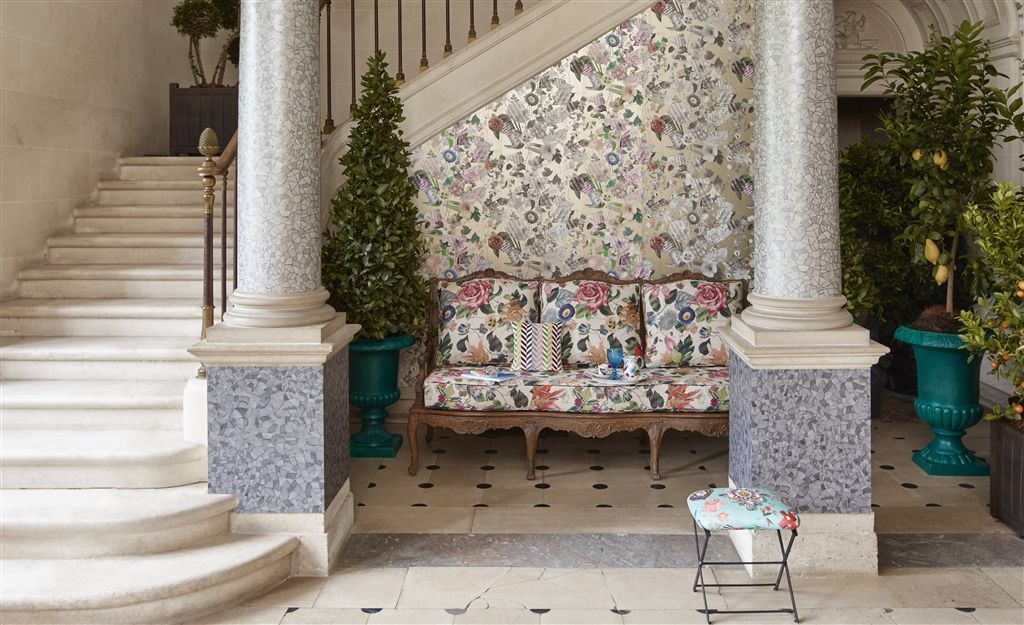

As a result of a generous welfare system together with major demographic changes and a marked increase in cases of cancer, diabetes, ulcers, skeletal injuries and mental disorders, Norway already spends more on public healthcare per person than any other country, and is looking to the technology sector both to improve healthcare services and to contain costs.
“A nursing home costs about NOK800,000 (£66,000) per person per year,” said Kathrine Mhyre, CEO of Oslo Medtech. “Recently the Norwegian health minister forecast that by 2030 almost one in four of Norway’s municipalities will have a population of which more than 50% are pensioners in need of care. Reorganising healthcare must be a priority and adopting technology is key to success.”
Oslo Medtech is a health technology cluster, dedicated to the development of medtech and e-health products and services for the Norwegian and global healthcare markets. As one of Norway’s largest technology clusters, Oslo Medtech has more than 190 members including such major names as DNB, Siemens, Microsoft and Sintef. Its initiatives range from an startup incubator in Oslo to a focus on gamification within healthcare.
“Health technology was the most profitable industry in 2015,” said Mhyre. “As the demand for health services will continue to increase and put pressure on economies around the world, it’s an obvious area for the Norwegian government to focus on.”
Medtech advances
Many enterprising startups are blazing a trail in medtech, including Novelda with its XeThru sensor technology. The radar system, which is integrated on a single chip, is capable of multiple uses, such as monitoring patients’ vital signs, personal security, environmental monitoring and home automation. It can detect presence, distance, proximity and gestures, and can see through walls, providing an assortment of medical uses.
In September 2015, Novelda took part in a sleep quality study to compare traditional hospital equipment with the XeThru data. During the testing night, a subject slept with the traditional sensors attached to their body, along with a XeThru respiration module placed at a distance. The XeThru sensor provided virtually identical readings to the traditional equipment, paving the way for more clinical trials.
Elsewhere, 3D gamified simulations from Attensi are helping Norwegian medical clients to train their staff in a way that will increase patient safety. Early users include the Østfold Hospital Trust, and further research and development is under way in collaboration with Hydro, Cybernetica and Sintef.
Investments in infrastructure
Norway’s extensive public healthcare system means there is an established network of hospitals, clinics and care infrastructure ready to receive new systems. In order to do so, investment in infrastructure is critical and some recent announcements show the money is beginning to flow.
Last year Helse Øst (Health East) signed a new framework agreement for the procurement of IT services with Ementor, Atea and HP Norway, with an expected spend of over NOK500m in the next four years. More recently, Helse Vest (Health West) announced a new infrastructure deal with a Green Mountain datacentre in a former NATO ammunition store at Rennesøy.
A recent Accenture report on healthcare IT in Norway said that 79% of Norwegian doctors are more proficient in using electronic health record (EHR) systems than they were two years ago, with 97% using the system to enter notes during or after the patient consultation. However, 46% said the EHR systems in their organisations are hard to use, while half said their use of technology has decreased the amount of time available to spend with patients.
Empowering users
Such findings place doubt on how fast new technology will be adopted by the medical community at large, so part of the answer may lie in empowering patients to help make decisions themselves.
A Norwegian health authority has tested an app designed to give patients a better understanding of the choices available for their specific circumstances.
The Decide Treatment app was developed by EviCare, a collaboration involving Innlandet Hospital Trust, Dips, the Norwegian University of Science and Technology (NTNU) and the Norwegian Knowledge Centre for the Health Services, with the backing of the Norwegian Research Council. The system is designed to help patients consider what is important to them and how that could affect treatment choices.
“The system is designed to be used in a shared decision-making context during consultations, but can also be used by patients alone and for self help,” said Øystein Eiring, project head and co-founder of EviCare. “But it is far beyond a decision-support tool, and will allow healthcare professionals and patients to select the most appropriate treatments over time to optimise long-term public health.”
Clinical testing of the system will clarify whether the approach improves healthcare outcomes, decreases the workload on clinicians, and increases the involvement and empowerment of patients over the long term.
The Smart Help app for iPhone and Android is a further example of developments in patient involvement. The app, which has received funding from Innovation Norway, is designed to capture and send location information automatically to the emergency services along with important information about the user such as allergies and medication. A successful live public test was held last year in Sør-Trøndelag county in conjunction with the local authorities and emergency services.
The welfare budget
The flipside of improved healthcare is an increasingly ageing population, which reduces tax revenues and puts pressure on public care systems.
The findings of a new study by NyAnalyse on behalf of Telenor reveal that to keep its current level of nursing and care services, the country will have to build 30 new nursing homes each year until 2040. Yet with a moderate impact of welfare technology, the proportion of the elderly population who live in nursing homes can be reduced from 27% to 22% by 2040, saving approximately NOK23bn in annual costs.
“Because we are not systematic enough in the follow-up of the effects of treatments, Norwegian healthcare organisations face enormous costs because of sub-optimal treatments or overmedicating,” said Eiring. “Putting systems in place to identify these inefficiencies and add a systematic approach to healthcare in Norway can make a real impact on the budget while at the same time optimising public health.”
[Source:- Computer Weekly ]
situs togel
situs togel
bandar togel
slot gacor
togel online
situs toto
situs toto
bandar togel
situs togel
situs togel resmi
situs toto
bandar togel resmi
bandar togel
bento4d
situs toto
situs togel
bandar togel
bandar togel online
toto togel
situs toto
toto slot
situs togel
situs toto
bento4d
bento4d
bandar togel resmi
situs toto slot
rtp live
bento4d
toto slot
situs togel
toto slot
situs toto
situs togel
bandar togel
https://pafibengkuluutarakab.org
https://pafiboalemokab.org
https://pafibulelengkab.org
https://pafibungokab.org
https://pafibuolkab.org
https://pafikablubuklinggau.org
https://pafikabpenukal.org
https://pafikabsumsel.org
https://pafikabtanahselatan.org
https://pafikabtanjungjabungselatan.org
https://pafikabupatenacehbarat.org
https://pafikabupatenacehjaya.org
https://pafikabupatenacehutara.org
https://pafikabupatenkaro.org
https://pafikotapalangka.org
https://pafikotaserong.org
https://pafimusirawaskab.org
https://pafipahuwato.org
https://pafipangkajenekepulauan.org
https://pafipcbatanghari.org
https://pafipccirebonkab.org
https://pafipckotajabar.org
https://pafipcpaser.org
https://pafipcpulaudeli.org
https://pafipcsarolangun.org
https://pafipemkobangli.org
https://pafipemkoserangkota.org
https://pafipemkotkerinci.org
https://pafipemkotpalopo.org
https://pafipemkotpasuruan.org
https://pafipemkobandaaceh.org/
https://pafipemkonusantara.org/
https://pafipemkosorong.org/
https://pafipemkopekanbaru.org/
https://pafipemkomobagu.org/
https://pafipemkopadangpanjang.org/
https://pafipemkopayakumbuh.org/
https://pafipemkosawahlunto.org/
https://pafipemkolubuklinggau.org/
https://pafipemkopagaralam.org/
https://pafipemkosubulussalam.org/
https://pafipemkoprabumulih.org/
https://pafipemkogunungsitoli.org/
https://pafipemkopadangsidimpuan.org/
https://pafipemkopematangsiantar.org/
https://pafipemkotidorekepulauan.org/
https://pafipulaupini.org/
https://pafipulausamosir.org/
https://pafipulaupadang.org/
https://pafipulausalahnama.org/
situs togel
bandar togel
situs toto
situs toto
togel online
situs toto
situs toto macau
toto togel
situs togel
bandar toto
situs toto
toto slot
toto togel
situs toto
bandar togel
situs toto
situs toto
situs togel resmi
situs togel
togel online
situs togel
situs togel resmi
link togel
toto togel
bandar togel
situs toto
situs togel resmi
bandar togel online
slot online
situs togel online
agen togel
situs togel online
situs togel
situs toto togel
situs togel resmi
situs togel resmi
bo togel
situs togel resmi
bandar togel
situs togel
situs toto
situs togel
bo togel
situs toto
toto slot
situs toto
toto togel
situs togel
situs togel
situs togel online
situs toto
situs togel terpercaya
situs togel terpercaya
situs toto
situs toto
situs togel
https://www.kimiafarmabali.com/
https://www.kimiafarmabanten.com/
https://www.kimiafarmabanten.com/
https://www.kimiafarmabatam.com/
https://www.kimiafarmabogor.com/
https://www.kimiafarmajambi.com/
https://www.kimiafarmalampung.com/
https://www.kimiafarmamedan.com/
https://www.kimiafarmapalembang.com/
https://www.kimiafarmapontianak.com/
https://www.kimiafarmariau.com/
https://www.kimiafarmasurabaya.com/
togel
situs toto
prediksi togel hk
situs toto
togel online
toto macau
toto togel
toto macau
situs togel resmi
toto macau
situs togel
situs toto
situs toto togel
situs toto
situs toto
situs togel resmi
situs toto
situs toto
situs toto
situs toto
situs toto
situs toto
toto slot
toto macau
toto macau
situs toto
situs toto
toto togel
situs toto
bento4d
situs slot gacor
bento4d
situs toto
bandar togel
toto togel
situs togel terpercaya
bandar togel
toto togel
situs togel
situs togel
situs toto
https://peniya.com
situs toto
situs toto
bandar togel
toto togel
toto togel
toto slot
situs toto
situs toto
situs togel
situs toto
situs togel terpercaya
https://www.ajd.be/
https://prepaidgiftbalance.mobi/
https://mbkm.unimen.ac.id/-/toto/
prediksi hk
prediksi hk
situs toto
situs togel resmi
situs togel resmi
situs togel
situs togel terpercaya
situs togel terpercaya
toto slot
https://jakarta.ipdn.ac.id/-/greate/
situs toto
situs toto
situs toto
situs toto
situs toto
situs toto
situs toto
situs toto
situs toto
situs togel resmi
situs togel
toto slot gacor
toto togel
situs togel
situs togel
situs togel terpercaya
toto slot
slot gacor
slot pg
toto resmi
toto togel
bandar togel terpercaya
cerutu4d
cerutu4d
situs toto
situs togel terpercaya
situs toto
prediksi hk
slot gacor
bandar togel
situs toto
situs toto
bandar togel
pafikabupatenpaser.org
pafikabupatenmahakamulu.org
pafikabupatenberau.org
pafikabupatenkatingan.org
pafikabupatengunungmas.org
pafikabupatenkapuas.org
pafikabupatenmajene.org
pafikabupatenmamasa.org
pafikabupatenmamuju.org
pafikabupatenpasangkayu.org
pafikabupatenburu.org
pafikabupatenjayapura.org
pafikabupatensarmi.org
pafikabupatensupiori.org
pafikabupatenwaropen.org
pafikabupatenmappi.org
pafikabupatennabire.org
pafikabupatenyalimo.org
pafikotaaimas.org
https://pafikabupatennduga.org
https://pafikabupatenbombana.org





